GWM ORA 07 vs VW ID.3 – Which one offers the better deal?
Both models have their strengths – but which one suits you more?
Compare performance, efficiency, price and space directly: GWM ORA 07 or VW ID.3?
Electric Hatchbacks of Tomorrow: GWM ORA 07 vs VW ID.3
The electrifying battle between hatchbacks continues to intensify, as the 2024 GWM ORA 07 takes on the already popular VW ID.3. Both models bring their own innovations and technical prowess to the table. Let's delve into the specifics of these eco-friendly vehicles and see how they stack up against each other.
Power and Performance
When it comes to performance, the GWM ORA 07 offers impressive numbers with its most powerful version generating 408 HP and achieving 0-100 km/h in a swift 4.5 seconds. It has an all-wheel-drive system available, catering to those who desire dynamism and control. On the other hand, the VW ID.3 provides a range of power options, with the most powerful variant delivering 326 HP and completing the 0-100 km/h sprint in a respectable 5.7 seconds. The rear-wheel-drive ID.3 offers a sportier driving feel, appealing to enthusiasts who appreciate a hint of traditional rear-wheel dynamics.
Range and Efficiency
In terms of electric range, the VW ID.3 takes a slight edge, offering up to 604 km on a single charge for its top-tier variant, courtesy of its 79 kWh battery pack. The GWM ORA 07 offers a competitive maximum range of 520 km with its largest 83.5 kWh battery. The VW ID.3 is particularly efficient, boasting energy consumption of just 14.5 kWh/100km for its most efficient model, compared to the ORA 07's 16.5 kWh/100km for its most efficient setting.
Design and Practicality
Both hatchbacks are designed to catch the eye, with the GWM ORA 07 stretching to 4871 mm in length, exuding a more elongated and sleek appearance compared to the stockier 4264 mm VW ID.3. In terms of practicality, the ID.3 offers a larger trunk capacity of 385 liters, slightly outperforming the ORA 07's 333 liters. Both vehicles boast a similar design ethos with 5-door layouts, providing ample access and convenience.
Innovative Features
Inside, these cars come loaded with tech features aimed at enhancing the driving experience. The ORA 07 impresses with its futuristic interface and all-digital cockpit, offering a seamless digital experience complemented by advanced driver assistance systems. The ID.3, known for its user-friendly infotainment system, combines a minimalist design with an intuitive user interface, making it ideal for tech-savvy drivers.
Conclusion
Choosing between the GWM ORA 07 and the VW ID.3 boils down to personal preference and priorities. The ORA 07 appeals to those seeking high power and performance, while the ID.3 is a stellar choice for those prioritizing range and efficiency. Both are remarkable examples of what the future of electric hatchbacks holds, ensuring that no matter the choice, drivers will enjoy a sustainable and thrilling ride.
Here’s where it gets real: The technical differences in detail
Costs and Efficiency: When it comes to price and running costs, the biggest differences usually appear. This is often where you see which car fits your budget better in the long run.
VW ID.3 has a evident advantage in terms of price – it starts at 28600 £, while the GWM ORA 07 costs 36000 £. That’s a price difference of around 7423 £.
In terms of energy consumption, the advantage goes to the VW ID.3: with 14.50 kWh per 100 km, it’s slightly more efficient than the GWM ORA 07 with 16.50 kWh. That’s a difference of about 2 kWh.
As for range, the VW ID.3 performs to a small extent better – achieving up to 605 km, about 85 km more than the GWM ORA 07.
Engine and Performance: Under the bonnet, it becomes clear which model is tuned for sportiness and which one takes the lead when you hit the accelerator.
When it comes to engine power, the GWM ORA 07 has a noticeable edge – offering 408 HP compared to 326 HP. That’s roughly 82 HP more horsepower.
In acceleration from 0 to 100 km/h, the GWM ORA 07 is distinct quicker – completing the sprint in 4.50 s, while the VW ID.3 takes 5.70 s. That’s about 1.20 s faster.
In terms of top speed, the VW ID.3 performs slight better – reaching 200 km/h, while the GWM ORA 07 tops out at 180 km/h. The difference is around 20 km/h.
There’s also a difference in torque: the GWM ORA 07 pulls somewhat stronger with 680 Nm compared to 545 Nm. That’s about 135 Nm difference.
Space and Everyday Use: Cabin size, boot volume and payload all play a role in everyday practicality. Here, comfort and flexibility make the difference.
Both vehicles offer seating for 5 people.
In curb weight, the VW ID.3 is a bit lighter – 1787 kg compared to 2065 kg. The difference is around 278 kg.
In terms of boot space, the VW ID.3 offers to a small extent more room – 385 L compared to 333 L. That’s a difference of about 52 L.
In maximum load capacity, the VW ID.3 performs slightly better – up to 1267 L, which is about 222 L more than the GWM ORA 07.
When it comes to payload, VW ID.3 clearly perceptible takes the win – 473 kg compared to 350 kg. That’s a difference of about 123 kg.
All in all, the VW ID.3 shows itself to be offers a more balanced package and secures the title of DriveDuel Champion.
It impresses with the more balanced overall package and proves to be the more versatile companion for everyday use.
GWM ORA 07
The GWM ORA 07 is a striking addition to the electric vehicle market, boasting a design that elegantly merges retro aesthetics with modern flair. Its interior offers a spacious and comfortable experience, enhanced by high-quality materials and innovative technology features. On the road, the ORA 07 delivers a smooth and responsive driving experience, making it an appealing choice for eco-conscious drivers who appreciate style and performance.
detailsVW ID.3
The VW ID.3 represents Volkswagen's entry into the world of electric vehicles, offering a modern design that combines functionality with sustainability. Inside, you'll find a spacious and tech-forward interior, providing a comfortable driving experience while maintaining a focus on environmentally friendly materials. The ID.3's performance delivers a smooth and responsive feel on the road, making it a strong contender in the growing electric car market.
details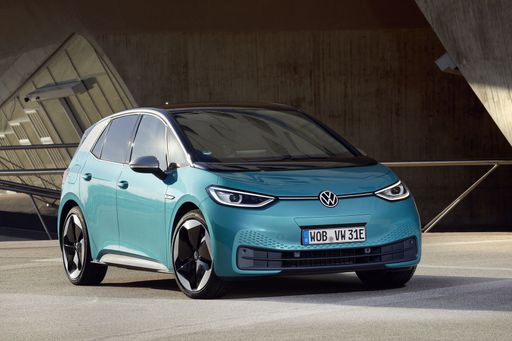 @ Volkswagen
@ Volkswagen
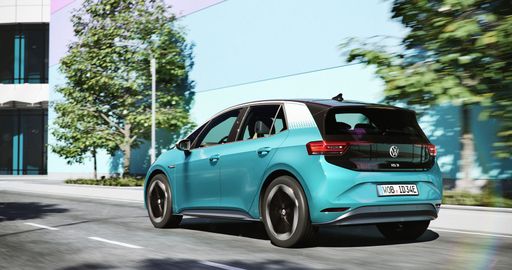 @ Volkswagen
@ Volkswagen
 @ Volkswagen
@ Volkswagen
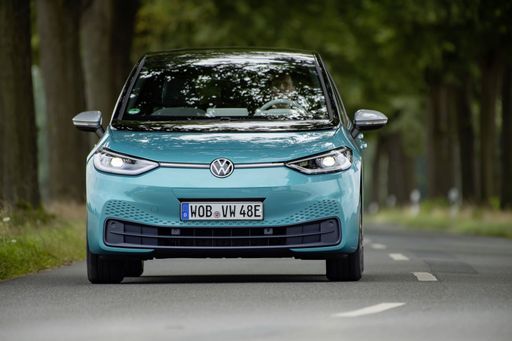 @ Volkswagen
@ Volkswagen
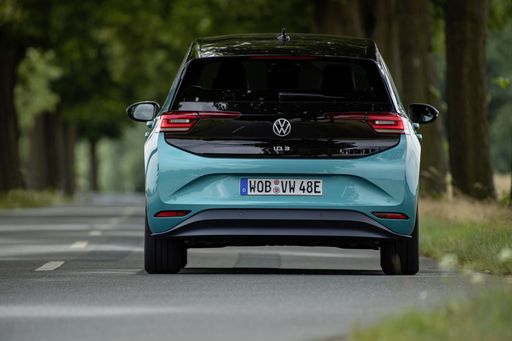 @ Volkswagen
@ Volkswagen
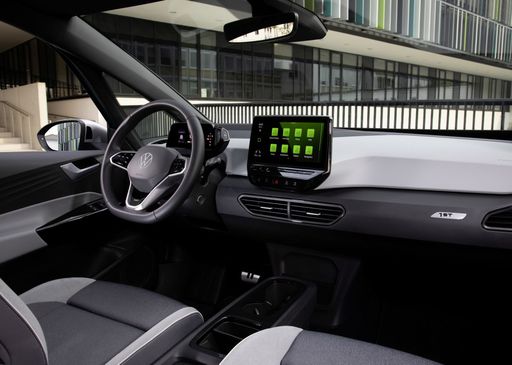 @ Volkswagen
@ Volkswagen
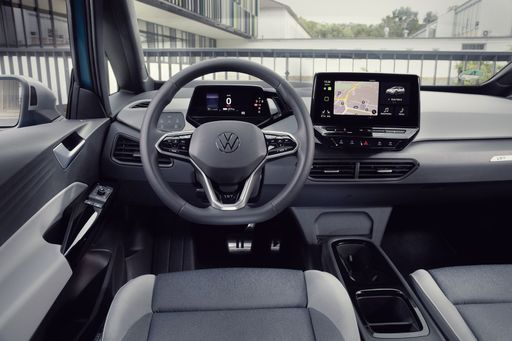 @ Volkswagen
@ Volkswagen

|
|
|
|
|
Costs and Consumption |
|
|---|---|
|
Price
36000 - 45800 £
|
Price
28600 - 49300 £
|
|
Consumption L/100km
-
|
Consumption L/100km
-
|
|
Consumption kWh/100km
16.5 - 17.5 kWh
|
Consumption kWh/100km
14.5 - 15.8 kWh
|
|
Electric Range
440 - 520 km
|
Electric Range
383 - 605 km
|
|
Battery Capacity
64.3 - 83.5 kWh
|
Battery Capacity
52 - 79 kWh
|
|
co2
0 g/km
|
co2
0 g/km
|
|
Fuel tank capacity
-
|
Fuel tank capacity
-
|
Dimensions and Body |
|
|---|---|
|
Body Type
Hatchback
|
Body Type
Hatchback
|
|
Seats
5
|
Seats
5
|
|
Doors
5
|
Doors
5
|
|
Curb weight
2065 - 2210 kg
|
Curb weight
1787 - 1993 kg
|
|
Trunk capacity
333 L
|
Trunk capacity
385 L
|
|
Length
4871 mm
|
Length
4264 mm
|
|
Width
1862 mm
|
Width
1809 mm
|
|
Height
1500 mm
|
Height
1564 mm
|
|
Max trunk capacity
1045 L
|
Max trunk capacity
1267 L
|
|
Payload
350 kg
|
Payload
437 - 473 kg
|
Engine and Performance |
|
|---|---|
|
Engine Type
Electric
|
Engine Type
Electric
|
|
Transmission
Automatic
|
Transmission
Automatic
|
|
Transmission Detail
Reduction Gearbox
|
Transmission Detail
Reduction Gearbox
|
|
Drive Type
All-Wheel Drive, Front-Wheel Drive
|
Drive Type
Rear-Wheel Drive
|
|
Power HP
204 - 408 HP
|
Power HP
170 - 326 HP
|
|
Acceleration 0-100km/h
4.5 - 8.2 s
|
Acceleration 0-100km/h
5.7 - 8.2 s
|
|
Max Speed
170 - 180 km/h
|
Max Speed
160 - 200 km/h
|
|
Torque
340 - 680 Nm
|
Torque
310 - 545 Nm
|
|
Number of Cylinders
-
|
Number of Cylinders
-
|
|
Power kW
150 - 300 kW
|
Power kW
125 - 240 kW
|
|
Engine capacity
-
|
Engine capacity
-
|
General |
|
|---|---|
|
Model Year
2024
|
Model Year
2024 - 2025
|
|
CO2 Efficiency Class
A
|
CO2 Efficiency Class
A
|
|
Brand
GWM
|
Brand
VW
|
Is the GWM ORA 07 offered with different drivetrains?
Available configurations include All-Wheel Drive or Front-Wheel Drive.
The prices and data displayed are estimates based on German list prices and may vary by country. This information is not legally binding.
